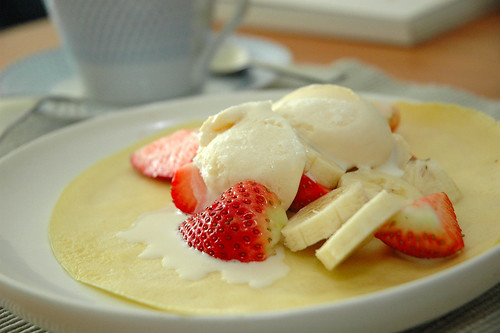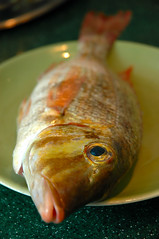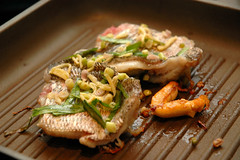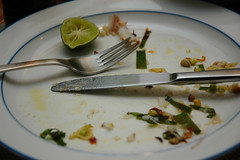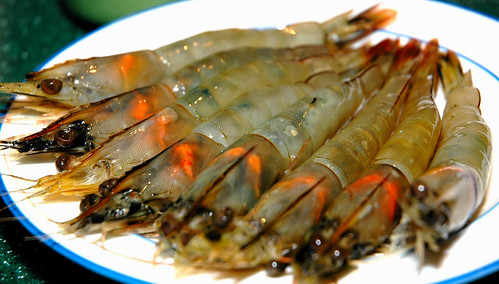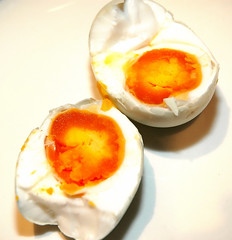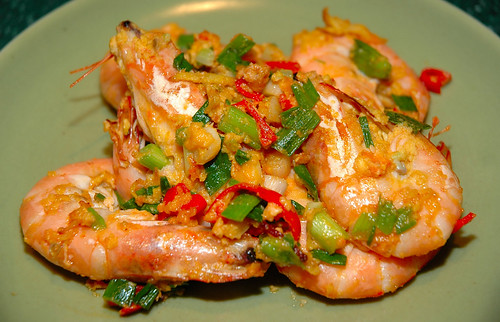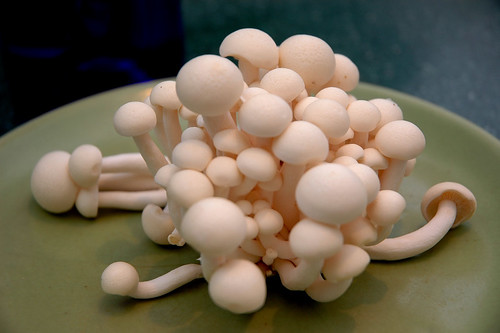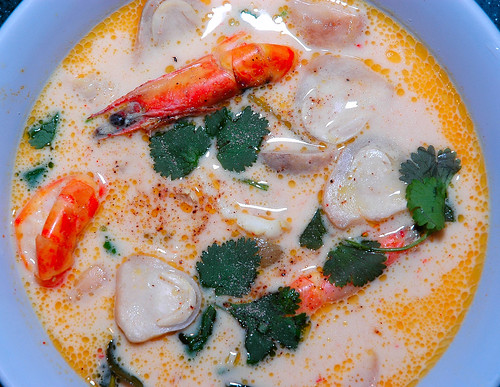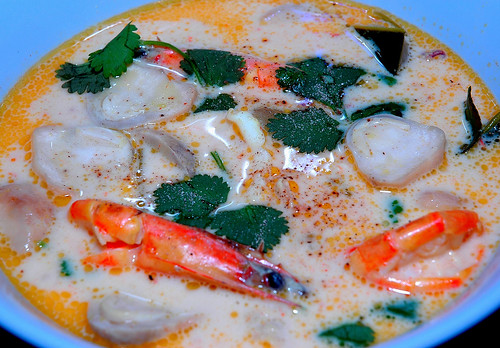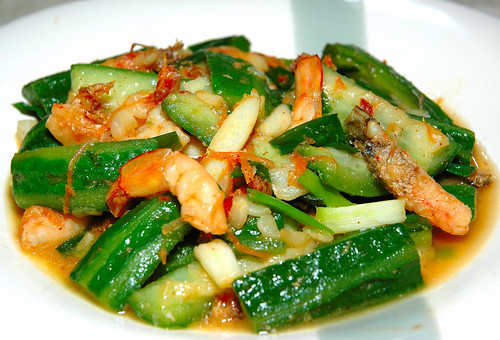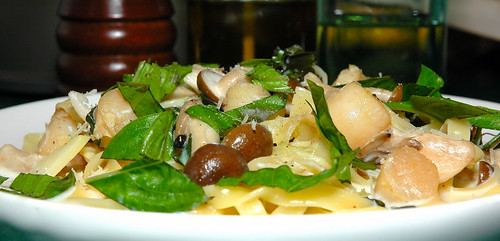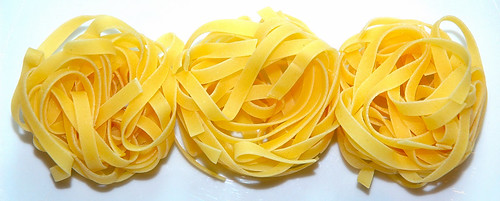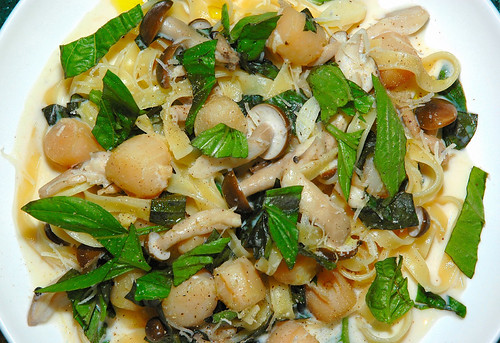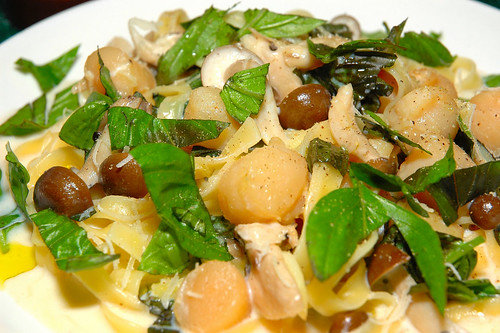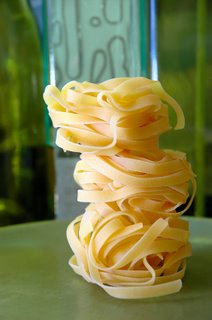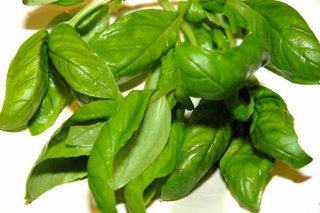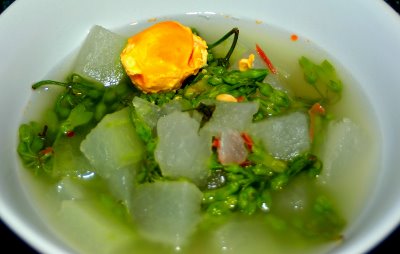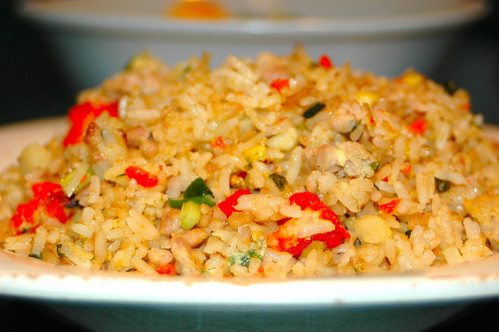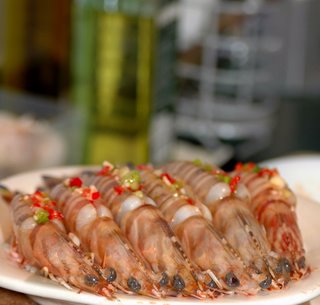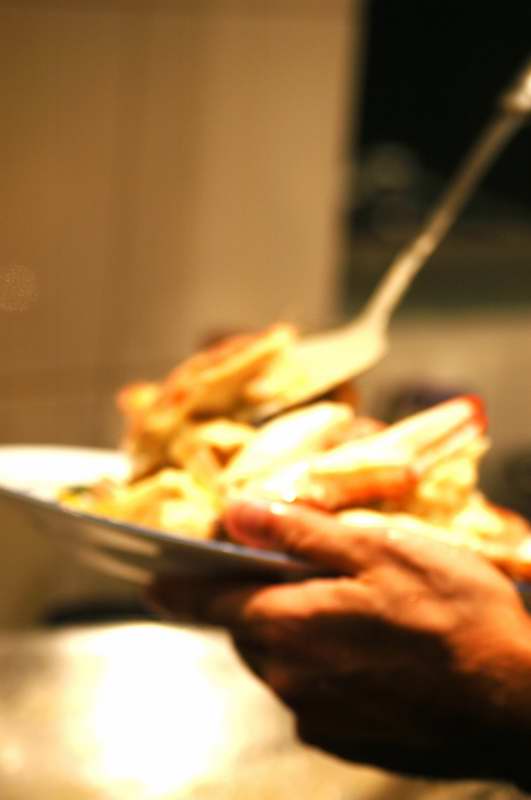Tagliatelle al Gamberetti e Calamari
The first impression I had about pasta was from Pizza Hut. Obviously not a nice experience to start with. Then I tried cooking my own with a bottle of Dolmo spaghetti sauce. Very soon I began wondering why people would eat pasta in the first place. I was convinced that Marco Polo must have got things upside down when he brought home that nest of Chinese noodles. Until I tried the authentic Italian pasta (somewhere in Italy, of course), I didn’t realize I'd been so wrong and missed out the whole truth about this five-letter word.
Cooking pasta is all about time, nothing more or less. Ingredients are simple and few. To get that “al dente” quality, you must get the timing unforgivingly right. The most critical part of the cooking process lasts for just about five minutes. You can either glorify or ruin it in five minutes!
This recipe is similar to the one I did here in October 2006, Tagliatelle al Cappesante con Basilico. I only have the scallops replaced by prawns and squids, and white Shimeji mushrooms instead of brown. They are the best choices of ingredient for making seafood pasta, in my experience. Get those medium-sized sea prawns with rich roes inside their heads. They offer an excellent natural ingredient for the sauce. You’ll also get that golden-red color that will drive your appetite up to the roof.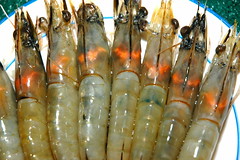 Ingredients, for a single serving:
Ingredients, for a single serving:
1. 2 nests of tagliatelle (fresh is better, but dried just fine);
2. sea prawns with rich roes;
3. fresh squids;
4. white Shimeji mushrooms;
5. 2 cloves of garlic, finely chopped;
6. 1 small cube of Parmigiano Reggiano cheese; and of course
7. a bunch of fresh basil.
Remove the shells of the prawns. Slice them gently on the top and get their intestines out (be careful not to squeeze their roes out!). Clean the squids, remove their skins, and slice them diagonally from top to bottom to get thinner layers.
Bring tagliatelle to a fast boil and add sea-salt for 4 minutes. Leave the lid open and stir occassionally.
Heat up the pan with garlic and extra virgin olive oil. I have found a Berndes 12-inch wok an excellent equipment for cooking this pasta. It adds a dose of “Chinese wok-spirits” to the final outturn.
Bring the prawns, squids and a bit of butter in. Let them simmered in medium heat for ½ minute. Bring in the Shimeji mushrooms and stir them all gently for another minute.
The tagliatelle should be done and drained by now (don’t rinse with cold water). Pour it over the prawns and squids. Stir-fry them gently altogether for one more minute in high-medium heat.
Lower the heat to medium. Grind some white-and-black pepper and half a cube of Parmigiano Reggiano. Turn off the heat. Give it another gentle stir.
Bring everything onto a warm plate. Garnish generously with fresh Italian basil. A few more drops of extra olive oil, another grind of pepper and it’s done. A glass of Chardonnay will promise to make this pasta sing!
Labels: recipe


